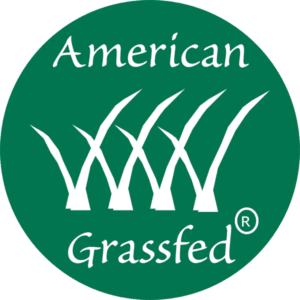 On January 12, USDA’s Agricultural Marketing Service rescinded the standards for the grassfed marketing claim. These were the minimal standards behind the grassfed label found on meat sold wholesale or retail. The reasons for the rescission are somewhat unclear, but according to AMS representatives, they have reinterpreted their authority and decided that developing and maintaining marketing standards does not fit within their agency.
On January 12, USDA’s Agricultural Marketing Service rescinded the standards for the grassfed marketing claim. These were the minimal standards behind the grassfed label found on meat sold wholesale or retail. The reasons for the rescission are somewhat unclear, but according to AMS representatives, they have reinterpreted their authority and decided that developing and maintaining marketing standards does not fit within their agency.
Some Background
After a lengthy public process that lasted several years, AMS introduced the grassfed standard in 2006. USDA’s Food Safety and Inspection Service, the regulatory arm that approves meat labels, was charged with enforcing the standard for those who chose to use it. But because FSIS required no audit or other verification other than a producer-signed affidavit, the term was sometimes misused and was often confusing, both for producers and consumers. The growth of grassfed demand in the marketplace only fueled the misperceptions.
Going forward, FSIS will continue to approve the grassfed label claim, but producers will each define their own standards. FSIS is only considering the feeding protocol in their label approvals — other issues such as confinement; use of antibiotics and hormones; and the source of the animals, meat, and dairy products will be left up to the producer.
So what does this mean?
For Producers
• For American Grassfed Association Approved Producers, there will be no change. AGA’s standards are more comprehensive and stringent than the AMS standard, and FSIS will continue to accept those standards for the grassfed claim. AGA certified producers may continue using the AGA logo on their meat labels.
• Non-AGA certified producers using the AMS grassfed standards as the basis for their label claim must update their paperwork with FSIS, but will not have to reapply for label approval. They will have to assert that the standards they use are their own.
• Producers who have never used the grassfed claim may seek grassfed label approval from FSIS as long as they provide “documentation about what grassfed means to them,” according to Tammie Ballard of FSIS.
• Producers who feed grain can make a grassfed claim if they spell out the percentage of grass on the label: 90 percent grassfed, 75 percent grassfed, 10 percent grassfed, and so on. Ballard says this has always been true, and approval is on a case-by-case basis. How this is enforced is unclear, however.
• The Small and Very Small program will continue, and AMS will be in touch with those producers to discuss any changes.
The unfortunate thing for producers who have worked hard to build quality grassfed programs is that, with no common standards in place, they will be competing in the marketplace with the industrial meatpackers who can co-opt the grassfed label.
For Consumers
Once again, consumers lose out on transparency and an understanding of what they’re buying. Grassfed has always been a source of some confusion, but now, with no common standards underpinning it, consumers will find it increasingly difficult to trust the grassfed label. Like other mostly meaningless label terms like natural, cage-free, and free-range, grassfed will become just another feel-good marketing ploy used by the major meatpackers to dupe consumers into buying mass-produced, grain-fed, feedlot meat.
For those who want to buy real grassfed with a label they can trust:
• Buy from a farmer you know, and ask plenty of questions. Do you supplement with grain or grain by-products such as brewers and distillers grain or by-products from ethanol production? Where do you get your animals? Do you use antibiotics or hormones? Do you feed your animals in confinement?
• If you don’t have the luxury of knowing your producer personally, then look for the American Grassfed Approved logo. It’s the first and only standard developed by producers, range scientists, veterinarians, animal nutritionists, and other experts that guarantees the meat comes from animals fed a 100-percent forage diet, never confined to a feedlot, never fed antibiotics or hormones, and born and raised on American family farms. No other certification offers those assurances, and no other grassfed program uses true third-party audits to ensure compliance.
• Avoid buying inexpensive grocery store grassfed. Chances are good that it’s imported– although now that Congress has eliminated County of Origin Labeling, there’s no way to be certain—and the animals were probably confined and supplemented with some form of grain.
• Avoid buying meat with a grassfed percentage on the label. It’s either grassfed or it’s not. Studies have shown that even a small amount of grain in the animal’s diet affects the nutritional profile of the meat.
American Grassfed Association is the industry pioneer and leader, being the first organization to institute standards that most closely match what consumers want when they buy grassfed. The organization is led by American family farmers who have been in the business for decades, and who understand the unique challenges of producing products from healthy animals that are good for people, good for the planet, and good for rural communities.
If you have questions, please don’t hesitate to contact AGA at [email protected]
On June 11, 2003, a group of producers, food service industry personnel and consumer interest representatives established the American Grassfed Association. The goal of the association is to promote the grassfed industry through government relations, research, concept marketing and public education.
Our certification standards apply to all farms and ranches approved by AGA for the production of ruminant animals and products. Only farms and ranches certified to AGA standards may use AGA’s logo, trademark, service mark and/or design mark. Our standards are verified by an independent, third-party, on-farm yearly audit.

